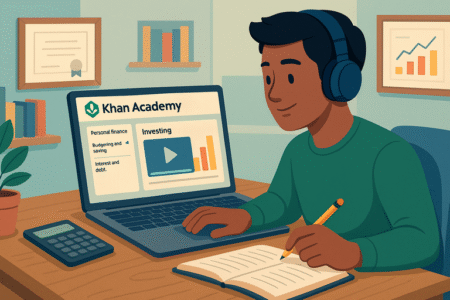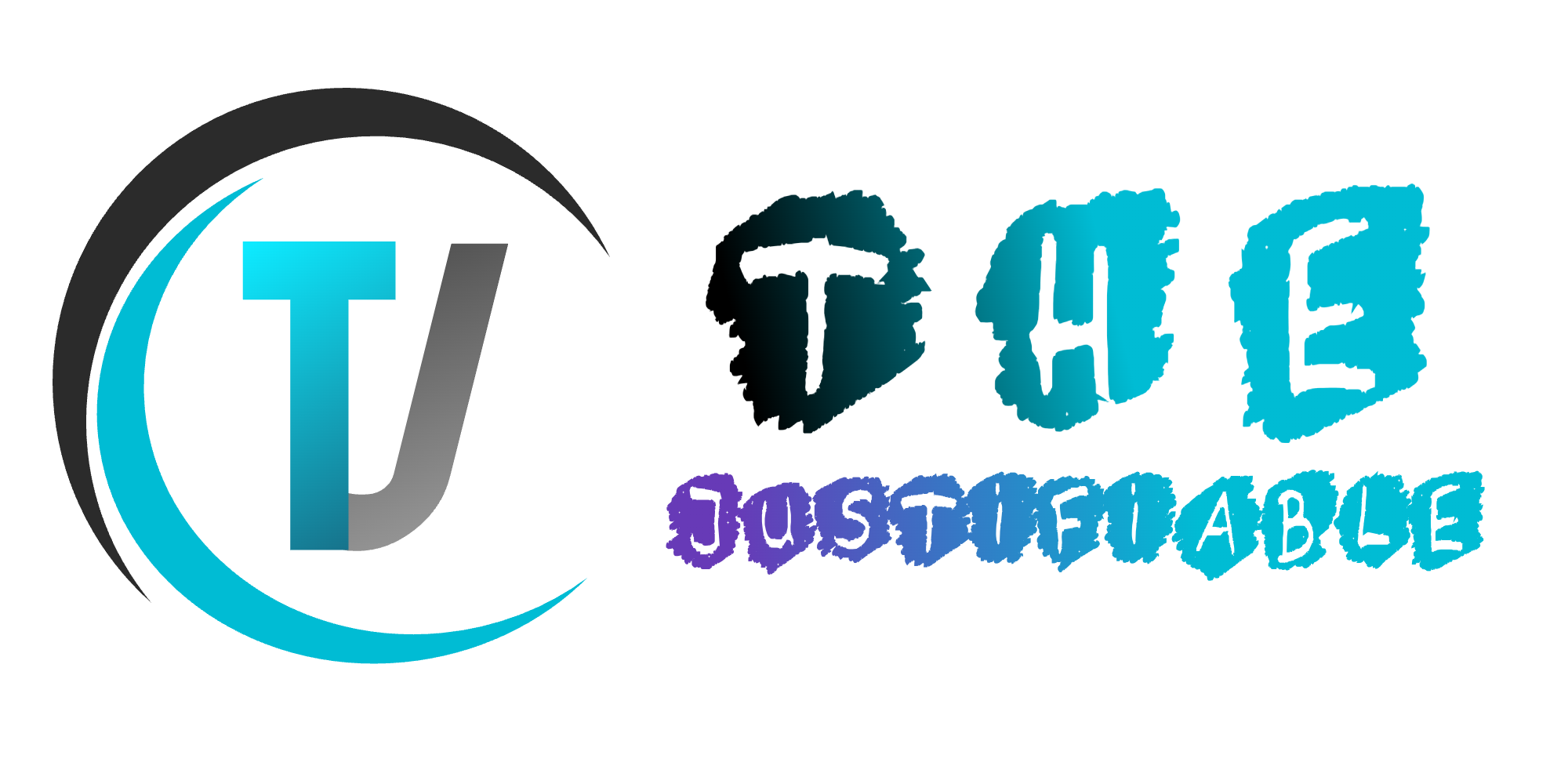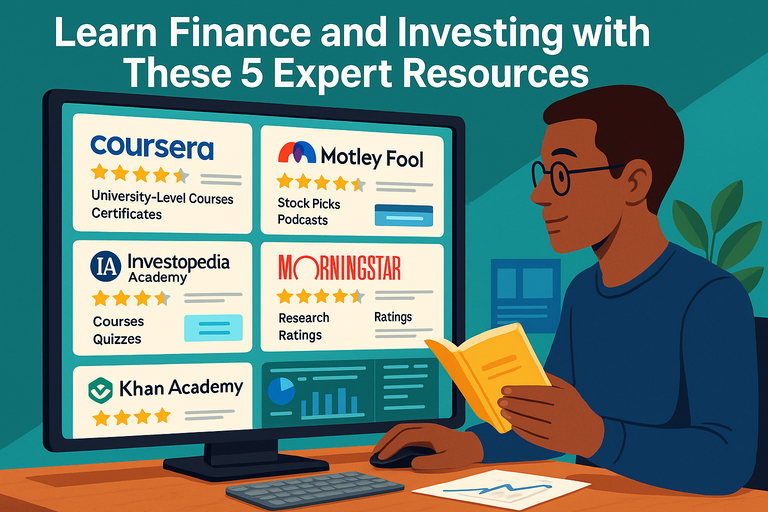Table of Contents
If you’ve been wondering how to learn finance and investing without feeling overwhelmed, you’re not alone. There’s so much information out there that it can be hard to know which resources are actually worth your time.
What if you had access to expert-driven tools and platforms that cut through the noise and showed you exactly how to build your money skills?
In this guide, I’ll walk you through five expert resources that can help you go from beginner to confident investor. Which one will be the game-changer for your financial journey?
1. Learn Finance And Investing With Coursera Courses
If you’ve ever wanted to learn finance and investing from credible institutions but balked at the tuition price tag, Coursera is the golden bridge between you and world-class universities.
You can sit at your kitchen table with a cup of coffee while accessing lectures from Yale, Wharton, or the University of Michigan.
The best part? Many courses are free to audit, and even the paid certificates cost a fraction of what a traditional course would.
Explore University-Level Courses Without the High Cost
Coursera partners with top universities and financial institutions to make education affordable and accessible. Instead of spending thousands on a semester of lectures, you can enroll in a high-quality finance specialization for under $100 a month.
For example, Yale’s “Financial Markets” course taught by Nobel laureate Robert Shiller is available to anyone worldwide.
In a traditional setting, you’d need to be admitted to Yale and pay tuition, but Coursera drops that barrier. I suggest starting with one of these foundational programs:
- Financial Markets (Yale)
- Business and Financial Modeling (Wharton)
- Personal & Family Financial Planning (University of Florida)
Each course gives you structured learning without leaving you drowning in a sea of random YouTube videos or blog posts.
Gain Practical Insights From Industry Experts
What makes Coursera stand out is the caliber of instructors. You’re not just reading static articles; you’re learning directly from finance professors, economists, and market analysts who have lived through bull and bear cycles.
One thing I’ve found valuable is the way lectures balance theory with current real-world examples.
For instance, in a behavioral finance module, you might learn about market bubbles and then see case studies of how investors behaved during the 2008 crash or the 2020 pandemic dip.
It’s these kinds of insights that make the learning stick because you can tie abstract concepts to what actually happens in markets.
Build Skills Through Hands-On Projects and Certificates
Coursera doesn’t stop at lectures. Many finance programs include capstone projects where you apply what you’ve learned.
For example, in the Financial Planning course, you might create a mock budget and investment plan. In Wharton’s Business and Financial Modeling specialization, you’ll build Excel models and test scenarios.
These projects aren’t busywork; they mimic what analysts and advisors do every day. If you’re looking to strengthen your resume, Coursera certificates carry weight because they’re backed by institutions employers recognize.
Imagine handing over a CV that shows “Investment Management Certificate from University of Geneva (via Coursera).” That signals initiative and credibility.
Pro tip: Always download your completed assignments and notes. I use them as a personal finance playbook that I revisit when making decisions about budgeting, risk tolerance, or stock evaluation.
2. Master The Basics With Investopedia Academy

Investopedia is already the go-to dictionary of finance, but its Academy takes things a step further by offering structured, paid courses designed to turn curiosity into practical skills.
If you’ve ever Googled “what is a bond?” and landed on Investopedia’s clean definition, imagine that same clarity packaged into step-by-step video lessons.
Start With Clear, Beginner-Friendly Explanations
Investopedia Academy knows how intimidating financial jargon can be. Their beginner courses strip away the complexity and speak directly to learners. For instance, the “Personal Finance for Beginners” course walks you through budgeting, saving, debt management, and investing basics in simple terms.
I suggest starting here if you’re someone who’s never invested before and feels anxious about the idea of “the market.”
Instead of dropping you straight into complicated portfolio theory, they ease you in with plain examples: “If you spend $4 on coffee every weekday, that’s about $80 a month — here’s what that could become if invested instead.”
The content feels like a financial coach guiding you, not a dry textbook.
Dive Into Advanced Topics Like Trading and Portfolio Strategy
Once you’re past the basics, Investopedia Academy doesn’t leave you hanging. They offer advanced classes covering day trading, technical analysis, options strategies, and portfolio construction.
For example, in the “Become a Day Trader” course, you’ll actually practice reading candlestick charts and identifying momentum shifts. It’s not just theory — you’re exposed to the same kinds of setups that professional traders use.
And if you lean more toward long-term investing, the “Investing for Beginners” course expands into diversification, asset allocation, and retirement strategies. What I like is how they provide frameworks you can directly apply to your own portfolio decisions, instead of vague “just diversify” advice.
Apply What You Learn With Interactive Quizzes and Simulations
What keeps Investopedia Academy engaging is the interactive learning style. After each lesson, you’re prompted with quizzes that test not just memorization but practical application.
For example, after a module on stocks, you might be asked to evaluate whether a hypothetical company is undervalued based on its P/E ratio. In trading courses, they even include practice simulations where you place mock trades in real-time environments without risking money.
This hands-on style builds confidence. It’s one thing to read about options, but quite another to execute a simulated covered call trade and see how time decay impacts your position.
From my experience, these simulations bridge the gap between “I understand this concept” and “I know how to actually do it.”
Pro tip: Use the Academy’s simulations as a testing ground before you ever touch your real brokerage account. That way, your mistakes cost you nothing but time — and those lessons are priceless.
3. Grow Money Skills With The Motley Fool Resources
The Motley Fool has built a reputation as one of the most approachable and trusted guides for everyday investors.
If you’ve ever wished you had a financial friend whispering stock tips and long-term strategies in your ear, this is as close as it gets.
Follow Trusted Guidance on Stocks and Market Trends
The Motley Fool’s flagship service, Stock Advisor, sends you two new stock picks every month. What makes it valuable isn’t just the recommendations but the in-depth write-ups explaining why they believe in a company.
From my experience, the biggest perk here is that they don’t just toss tickers at you. They explain the underlying business model, risks, and growth opportunities.
For example, you’ll see why a company like Tesla was flagged years ago — not because it was trendy but because of its innovation pipeline and market disruption potential.
Their market commentary is equally useful. Instead of scrolling Twitter for half-baked takes, you get structured analysis that connects the dots between global events and your portfolio.
Get Step-By-Step Insights on Long-Term Wealth Building
The Motley Fool isn’t about “get rich quick.” Their philosophy centers on buying strong companies and holding them for 5–10+ years.
Here’s how they make that digestible:
- They break down why long-term compounding matters with simple visuals and examples.
- They show the math: if you’d invested $10,000 in Amazon in 2002, you’d have well over $1M today.
- They encourage patience, reminding you that downturns are part of the ride.
This steady, methodical approach helps you keep perspective when markets get choppy. I often go back to their “hold through volatility” mindset during stressful market weeks.
Learn From Podcasts, Newsletters, and Stock Recommendations
One underrated gem is their podcast lineup. Shows like “Motley Fool Money” and “Rule Breaker Investing” are perfect for commutes or workouts. Instead of jargon-filled chatter, you get lively discussions about what’s happening in the market right now.
Their newsletters are also easy to digest. They mix education with actionable ideas — for instance, an email might highlight “5 Dividend Stocks to Watch” with reasons why each fits a stable-income portfolio.
Pro tip: If you’re new, start with the free articles and podcasts before diving into Stock Advisor. It gives you a feel for their style, and you’ll quickly see whether their philosophy resonates with your goals.
4. Sharpen Investing Knowledge Through Morningstar
Morningstar is like the Swiss Army knife of investment research tools. If you’ve ever felt lost trying to compare mutual funds, ETFs, or stocks, this platform lays everything out with clarity and depth.
Research Mutual Funds, ETFs, and Individual Stocks
Morningstar’s database is massive. You can type in almost any ticker symbol — whether it’s a stock, an ETF, or a mutual fund — and instantly pull up performance history, fees, and manager notes.
I often use it to compare two ETFs side by side. For instance, if I’m debating between an S&P 500 fund and a total stock market fund, Morningstar’s comparison tool shows the cost ratio, sector exposure, and even top holdings. It’s like peeking under the hood before committing.
Understand Risk and Performance With Expert Ratings
The signature feature is their star rating system. Funds and ETFs are graded from 1 to 5 stars, based on risk-adjusted performance. A 5-star rating signals consistent returns relative to similar investments.
But here’s where you need to be thoughtful: I suggest treating these ratings as a starting point, not a guarantee. Just because a fund is 5 stars today doesn’t mean it always will be. Markets shift. Still, the ratings are a fantastic shortcut for filtering the overwhelming number of options.
They also provide analyst reports where professionals explain the “why” behind ratings. Reading one of these feels like getting a mini-lesson in portfolio construction.
Use Tools That Help You Build Smarter Portfolios
Morningstar’s Portfolio Manager lets you input your current holdings and see how balanced (or unbalanced) your portfolio is. It will highlight if you’re too concentrated in tech or if your bond allocation is too light.
From the dashboard, you can track performance over time, test “what if” scenarios, and even model how adding new funds might affect your risk.
Pro tip: Use the “X-Ray” tool. It digs into your portfolio and shows hidden exposures. For example, you might think you’re diversified across three funds, but the tool will reveal that all three are heavily weighted in large-cap U.S. stocks. That kind of insight helps you avoid overconfidence in your diversification.
5. Learn Finance And Investing With Khan Academy

Khan Academy is the ultimate no-cost way to build a foundation in personal finance and investing.
If you’ve ever wished for a patient teacher who explains things step by step — without rushing — this is where to start.
Build Strong Foundations in Personal Finance
Before diving into stock picking, Khan Academy makes sure you understand the essentials: budgeting, interest, credit, and debt. The personal finance modules walk you through these building blocks with examples that feel real.
For instance, you’ll calculate how long it takes to pay off a credit card if you only make minimum payments. This kind of hands-on math makes the consequences (and opportunities) of money decisions crystal clear.
Study Key Investing Principles at Your Own Pace
The investing section covers everything from how the stock market works to the power of compound interest. What I love is how they explain complex ideas with simple analogies.
Instead of dropping you into formulas, they might explain compound growth by comparing it to a snowball rolling downhill, gathering more snow as it goes. That kind of imagery makes finance feel less intimidating and more memorable.
And since the lessons are broken into bite-sized videos, you can absorb one principle at a time.
Access Free Lessons Designed for Every Learning Style
Whether you prefer watching videos, reading transcripts, or practicing problems, Khan Academy adapts to you. The quizzes at the end of each section reinforce what you’ve just learned.
I suggest creating a free account to track your progress. The dashboard keeps you motivated by showing how much you’ve completed and what’s left. It feels a bit like leveling up in a game — except the reward is financial literacy.
Pro tip: Pair Khan Academy with one of the paid resources like Morningstar or Coursera. Khan builds your foundation, while the others give you the tools to apply those basics in real markets.
Pro Tip for Getting the Most Out of These Resources
Don’t try to use all five at once. It’s tempting, but you’ll get more out of going deep with one or two. For example:
- Use Khan Academy to master the basics.
- Layer on Motley Fool for stock insights.
- Add Morningstar when you’re ready to analyze your own portfolio.
The goal isn’t to collect knowledge like baseball cards. The goal is to apply it in a way that makes your financial future more stable and less stressful. Start small, stay consistent, and build momentum over time.






